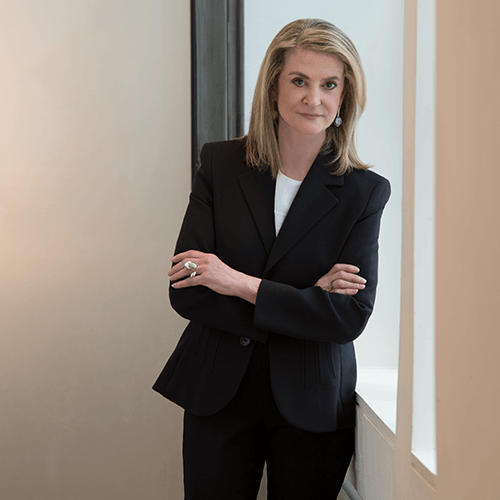
By Will Bailey, Chief Strategy Officer, InvestCloud
Just over one year ago, the world of wealth management was forced to turn digital overnight.
For many in the sector, the resulting digital drive forced technology adoption faster than we had ever seen. A KPMG study, conducted in April 2021, finds that 74 percent of organisations have accelerated operational digitisation, compared to 50 percent in August 2020 – showing the direct impact of the pandemic on priorities. But while the pace of digital adoption has increased, there are still many opportunities to innovate and differentiate a firm and ensure a better competitive advantage through technology.
But first, there needs to be a better understanding of digital adoption, and what it can achieve.
Adoption to date
Traditionally, many firms have geared digital adoption to the back-office – streamlining processes and simplifying human input. This of course makes perfect sense in terms of reducing costs, but it often also comes at the cost of improving the client experience.
The “point solution” approach, caused many in the industry to use digital as a means to solve specific business pain points – firms are now buried under point solutions for client onboarding, portfolio management, and report generation. Driven by the desire to grow and retain clients or find operational efficiency, managers made these one-off changes to keep with the times or to offer specific add-on functionality to remain relevant to clients. But relying on this piecemeal approach alone will not suffice and has resulted in fragmented operating environments that still rely on human processes or Microsoft Excel to see across the organisation.
The problem with the “point solution” approach is demonstrated in a report published in April 2021. It found that 63 percent of wealth platforms show significant digital capability gaps compared to investor expectations. And just 37 percent of investors give their platforms top scores for the digital experience. This highlights a significant gap between investor expectations and the tools wealth managers actually need in order to carry out their job.
Those who have gotten digital right recognise it as a core component of their client engagement and servicing strategy. Digital must be an extension of the brand and the ongoing dialogue between client and advisor. This requires wealth managers eschew point solutions in exchange for a holistic and consistent dialogue with clients.
This move in how we view digital will help meet the rapidly shifting attitudes amongst clients. Clients now require instant access to information and the ability to take action; accessible at anytime, anywhere and on any device of their choosing. Firms who make the effort to improve their digital offering will continue to earn their place to compete in the market — whilst those who do not will be rendered obsolete.
The current environment
The pandemic saw digital transition from a “nice to have” to business critical. As we look to exit from the pandemic, digital’s role in wealth management will not lessen but will continue to increase as client behaviours establish the “new normal.”
Wealth managers pride themselves on delivering great client experiences, either in plush offices or wherever their clients demand. Client expectations – already shifting towards digital-first – have now been irrevocably changed as they become used to on-demand services.
The basics of client engagement need to be re-considered. What can clients access online? What do they view? What do we need them to see? These questions must be answered – but managers must answer these with an empathetic lens applied to ensure the client feels like their experience is individual to them.
Increasingly, this is leading to a rise in the notion of delivering holistic advice via digital.
Defining digital holistic wellness
Holistic wellness is about moving beyond traditional wealth management and brokerage services towards catering to a client’s entire financial life and beyond. It means managers can go beyond the traditional remit and get even closer to clients – becoming the center of their financial lives and extending to cover all assets.
But with a greater remit, managers face more complexity. This is where digital delivers value.
Digital tools allow managers to create holistic wellness by capturing information about their clients that goes far beyond simply finances. This includes health, family, physical assets, and life goals. It develops a complete view of the client by deploying digital tools that allow the clients to share information in their own time over the course of their relationship with an adviser.
This begins right at the start of the relationship with dedicated pre-client portals that facilitate engaged prospects to seamlessly become clients and provide advisors and clients with digital tools to give a holistic view of the future. This – combined with behavioural science, machine learning and amplified intelligence tools – allows advisers to foster deep relationships quickly and intuitively with clients, rather than taking months to build up acquired knowledge via traditional means.
Ultimately, this empowers the client with community, knowledge, and a sense of relief. This is critical at a time of unstable financial markets and where advisers cannot have physical interactions with clients.
2021 and beyond
As we look to exit from the pandemic, wealth management will continue to digitise.
The “old think” technology adoption approach that creates fragmented experiences will give way to “new think,” digital client and adviser interactions that are part of one continuous relationship.
New think requires managers to challenge orthodoxy and resist the dual threats of increasing commoditisation and fee compression facing the sector. To achieve new think, every manager must buy in to the thinking that every digital journey starts with the client and each client is unique, the digital journey must support the uniqueness while enabling standard practices and procedures to allow for scale.
This is why providing holistic wellness is so important to the future of many advice firms – it further resists issues facing wealth managers. Provided both digitally and via high-touch human contact, holistic wellness creates a “sticky” experience for clients, making them more likely to stay with you and even expand share of assets if you can provide a more complete service offering.
While the sector might be looking forward to a return to normal in the coming months, now is the time to review technology adoption to date and think about how digital can enable the business and unlock new revenue streams. The opportunities are there – so long as comprehensive digital solutions are embraced, and everything is designed with the client in mind.























